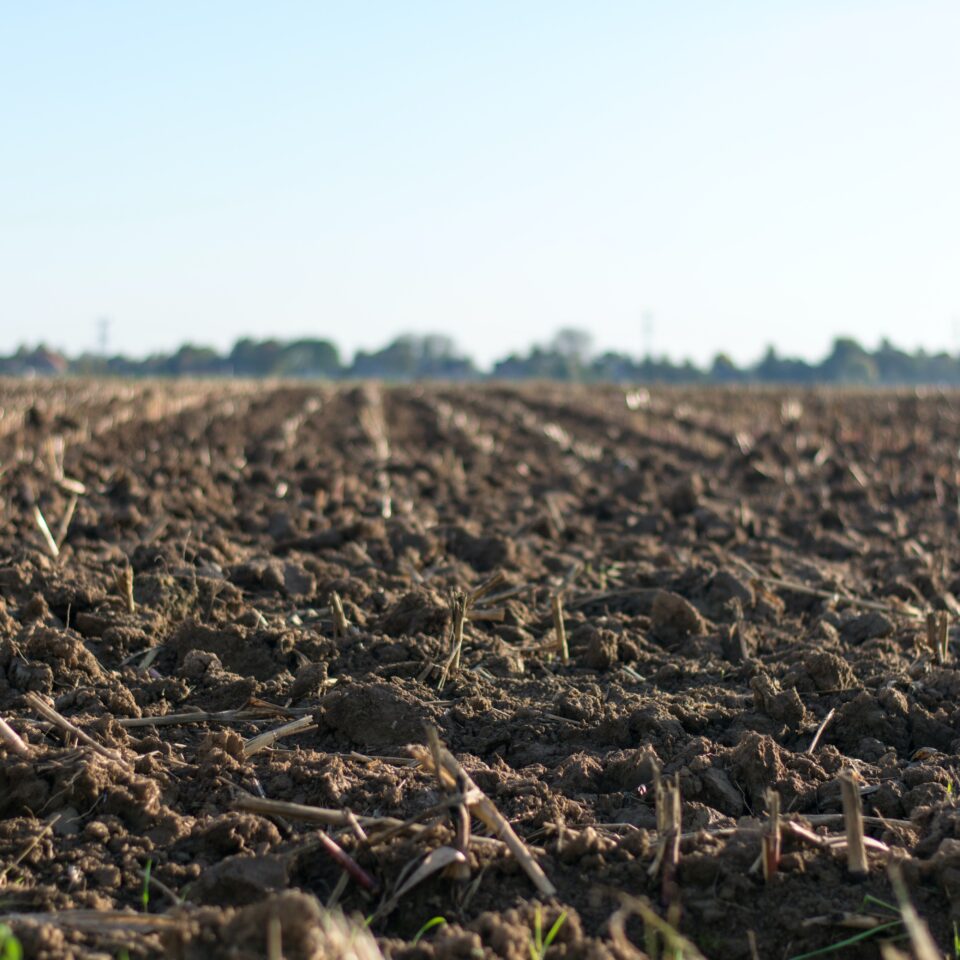
“Soil is the last necessary thing. With air and water, a person can live 30 days; add but a comely pile of dirt and life expectancy expands a thousand times.”
– Justin Isherwood
The most valuable piece of any farming operation is the soil on which our crops grow. We need to manage this resource carefully in order to promote the long term sustainability of our farms.
There is no bad time to get in touch with your soils as part of your multi-year crop plan. The sooner you sample, the sooner you can start working to enhance your field’s potential. Here are five great reasons for you to get your fields soil sampled.
Know Your Soil’s Fertility
- Ontario soils vary drastically from county to county, field to field, and even zone to zone within the fields.
- Without a soil analysis, it’s nearly impossible to determine what a soil needs in order to be productive.
- Think of your field like a bank account; soil testing is equivalent to a balance statement. Fertilizer/manure/compost applications are adding to your nutrient account, harvesting crops removes nutrients.
- In order to know what your fertility investment looks like, and what individual nutrient balances sit at, we need a way to properly evaluate them: soil testing.
Avoid Soil Degradation
- With yields trending higher and higher every year, your crops are removing more and more nutrients from the soil
- In zones where the soil is deficient, you may need substantially more of certain nutrients than the crop removes to balance the soils and improve productivity
- Does manure make sense on some fields more than others? Will certain fields/zones need more or less of specific fertilizers than others?
Avoid Over-Fertilization
- The parent materials of your soils cause them to be naturally low or high in certain nutrients, and we can adjust our fertilization plan based on soil test results.
- Over-application of nutrients can lead to at best, wasted input costs, or at worst, environmental damage to waterways and sensitive areas.
- We strive to follow the 4R standards: Right nutrient source, at the Right rate, in the Right place, at the Right time.
Maximize Your Farming Profitability
- Knowing which crop nutrients are most critical to your field’s productivity can help in making decisions for your crop’s fertility plan.
- Your crops can only produce as much as the lowest limiting nutrient, profitability depends on identifying and applying the right balance of fertilizer.
- Nutrient deficiencies can lead to reduced plant vigour, and increased susceptibility to damage from disease, insects, drought, and other conditions, causing yield loss and reduced net profit.
- Are you improving, maintaining, or degrading the soils that you depend on, as well as making a profit in your farming business?
- Huge part of a field’s profitability analysis as determined with PROFIT Analytics, through Sylvite’s partnership with Veritas Farm Management.
Feed the World
- It has been well documented that higher soil fertility levels lead to higher crop yields.
- In order to feed our ever growing population, it is an absolute necessity to improve our in-field productivity in a profitable, sustainable manner.
Soil Sampling Options
All Sylvite Agri-Service soil sampling options offer basic to complete nutrient analysis in addition to specialty tests such as soil texture, nematode, nitrates, etc.
Included with the sampling and analysis are mapping of field boundaries, zones, and site-specific sampling points, as need may be. The four main sampling types offered are:
Intensive Zone Sampling
- 1 sample taken every 2.5 or 5 acres per field.
- Samples taken throughout the entire management zone.
- Zones based on yield, elevation data, NDVI and bare ground imagery, and grower’s experience.
- Able to follow field contours, high/low yielding areas to differentiate between zones needing improvement vs zones already high in nutrition, showing variability within the field.
- Zones can be used to define specific problem spots or exceptional areas in the field.
Site-Specific Point Sampling
- 1 sample taken every 1, 2.5, or 5 acres per field.
- Sampler will navigate to spot most representative of the grid area.
- Sample taken in X pattern around point.
- Able to show variability within the field at and between points.
- May not follow field contours or yield zones as well depending on the field, extrapolates from the sample points instead of using management zones.
Precision Lite Sampling
- 1 sample taken every 10 – 25 acres per field.
- Samples taken throughout the entire management zone.
- Zones based on yield, elevation data, NDVI or bare ground imagery, and grower’s experience.
- More accurate than a bulk sample, allows producers and consultants to make management zones instead of sampler’s discretion.
- May not be able to accurately define highly variable soils as well as more intensive options.
SoilOptix Sampling
- High definition soil sampling – approx. 335 data points per acre.
- Uses sensor to read radiation naturally emitted by the soil, combined with physical soil tests at strategic locations throughout the field.
- Most detailed method of soil testing, able to pick up extreme variability within a field.
- Sensor readings accurate for 10 years, with small re-calibrations done after each crop cycle.